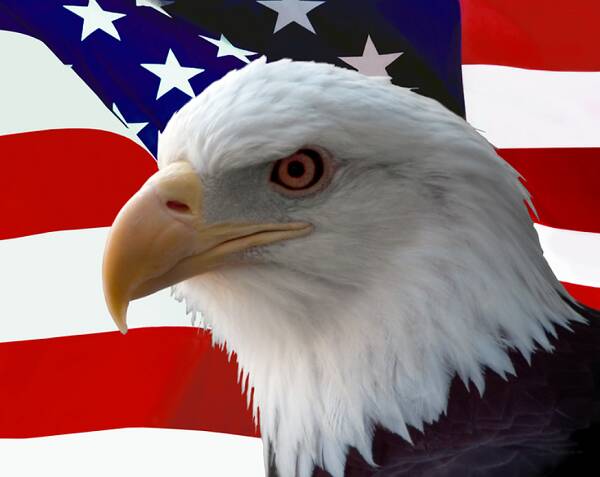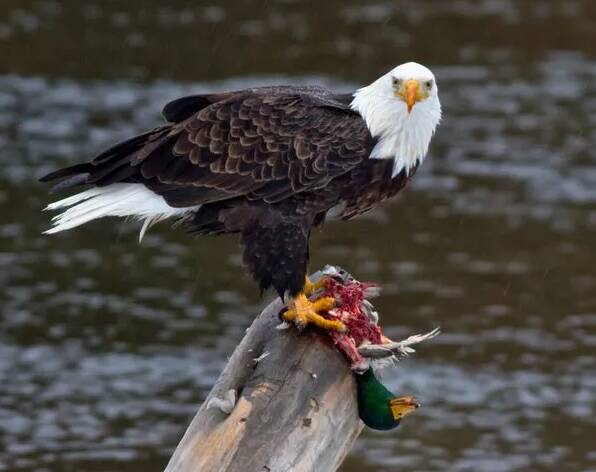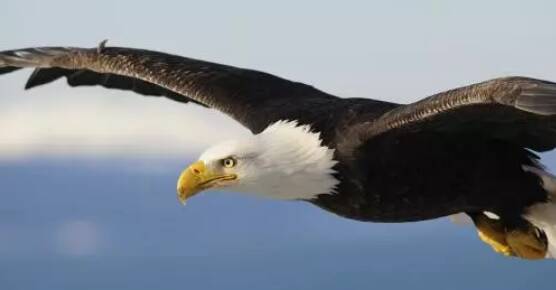Bald Eagle
IUCN
LCBasic Information
Scientific classification
- name:Bald Eagle
- Scientific Name:Bald Eagle,Haliaeetus leucocephalus
- Outline:Raptor
- Family:Accipitriformes Accipitridae Sea Eagle
Vital signs
- length:85-110cm
- Weight:3.5-6kg
- lifetime:
Feature
It is a species endemic to North America, the national bird of the United States
Distribution and Habitat
Country of origin: Canada, Mexico, Saint Pierre and Miquelon, United States. Travelers: Belize, Bermuda, Ireland, Puerto Rico, Russia, Virgin Islands.
Bald eagles are found in swampy tributaries, Louisiana, the Sonora Desert, and eastern deciduous forests, Quebec, and New England. The northern eagle is a migratory bird, while the southern eagle is a resident bird. Bald eagles were previously farmed in central North America, but at their lowest numbers are mainly limited to Alaska, the northern Aleutian Islands, and Eastern Canada and Florida.
Appearance
Bald eagles are large birds of prey with beautiful appearance and fierce temperament. Adult sea eagles can be up to 1 meter long with a wingspan of more than 2 meters. The eyes, mouth and feet are pale yellow, the feathers on the head, neck and tail are white, and the feathers on the rest of the body are dark brown, which is very strong and beautiful. The mouth and claws are very sharp and curved, and the eyes are keen. Like most birds of prey, the females are larger than the males.
Details
Bald eagles mainly live near coasts, lakes and rivers. They feed on large fish such as salmon and trout, water birds such as ducks and gulls, and small mammals living near water.
Bald eagles are experts at flying. They can fly at speeds of 56 to 70 km/h while gliding and flapping, and can still fly at speeds of 48 km/h while holding fish. They don't migrate very often. If the territory is close to water, it will not migrate, it will stay there all year round, but if it is not close to water, it will move south when it enters the winter, or to the coast side, where it can still easily feed during the winter. The migratory route chosen by bald eagles depends on whether the warm currents, updrafts and food resources of the route are favorable. During their migration, they use the warm current to climb up and then glide down, using the warm current to move forward, and when they encounter cliffs and some cliffs, they use the updraft to skim over these areas. Typically, they migrate during the day, when the sun creates warm currents that help them fly.
Bald eagles usually just squeak. Vision is the most important sense for bald eagles. The sharpness of the bald eagle's vision is extraordinary, even better than its color vision. Their good vision makes it easier for them to see where their prey is hiding. What a human would look like nothing more than a mass of beige fur, a bald eagle can clearly identify as five squirrels of different colors. Its vision is many times sharper than the human eye, especially in response to moving objects. It often hovers in the air, looks to the surrounding areas, is sharp, agile, and can grab dozens of kilograms of big fish on the water.

Bald eagles have claws for killing animals and hooks for tearing them apart, and their soles are rough like sandpaper. This helps them hold on to slippery prey, such as fish or snakes. For their body size, bald eagles' feet are quite large -- up to 15 centimeters long. Like most other birds of prey, the Whitehead statue is a day-hunting bird, often hunting in pairs, and with its unusually keen eyesight, even when flying high, it can detect all prey on the ground, in the water and in the trees. However, bald eagles eat fish as their staple food, so they often live along rivers, lakes, or oceans. In the Chikat River area near Hainas, Alaska, during the annual salmon run in November, the river bank of only 10 kilometers long can attract 3,000 to 4,000 bald eagles.
Bald eagles mate for life. During the breeding season, bald eagles often gather in groups in areas where food is more abundant, and build their nests on cliff walls or on the tops of towering trees. The material of nesting is mainly tree branches, but also some bird feathers and animal hair. Bald eagles, like other eagles, also like to use old nests and constantly repair them during breeding, so that the nest becomes larger and larger, generally up to 2.8 meters in diameter, up to 6 meters thick, and up to 2,000 kilograms in weight.

When the bald eagle was designated the national bird of the United States in 1782, there were about 100,000 of them in the United States outside Alaska. However, continuous land development after the founding of the United States has rapidly reduced the bald eagle's habitat, and excessive hunting has further decreased the bald eagle population. In 1940, the United States Congress passed the Bald Eagle and Golden Eagle Protection Act, prohibiting the killing and trading of bald eagles, and strengthening the protection of bald eagles in the public publicity. After this law was enacted, bald eagle populations rebounded in many states in the early 1940s.When the bald eagle was designated the national bird of the United States in 1782, there were about 100,000 of them in the United States outside Alaska. However, continuous land development after the founding of the United States has rapidly reduced the bald eagle's habitat, and excessive hunting has further decreased the bald eagle population. In 1940, the United States Congress passed the Bald Eagle and Golden Eagle Protection Act, prohibiting the killing and trading of bald eagles, and strengthening the protection of bald eagles in the public publicity. After this law was enacted, bald eagle populations rebounded in many states in the early 1940s.

On June 20, 1782, the Continental Congress approved the adoption of some of the designs for the United States, including a bald eagle gripping an arrow and an olive branch with its claws.
The bald eagle is a sacred bird in some North American cultures, and its feathers, like the golden eagle, play an important role in many Native American religions and practices. These Native Americans believed that bald eagles were messengers of messages between gods and men.

Listed in Appendices I, II and III of the Convention on International Trade in Endangered Species of Wild Fauna and Flora (CITES) 2019 edition Appendix II.
Listed in the International Union for Conservation of Nature Red List of Threatened Species (IUCN) for 2016 ver 3.1 - Not Threatened (LC).







